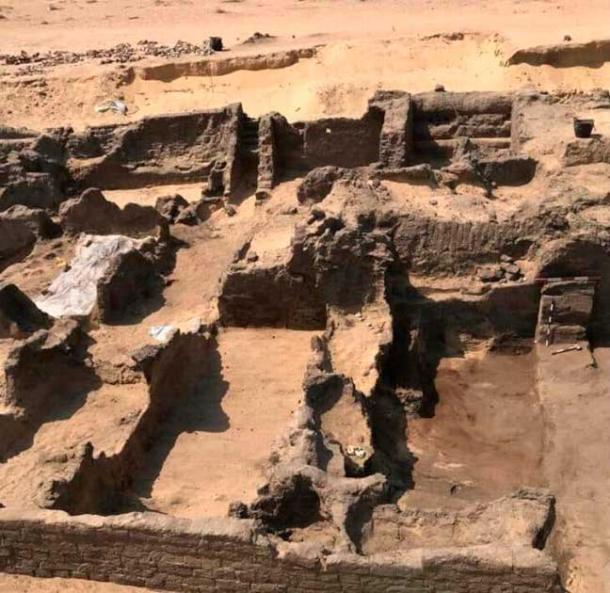Ancient Mummies Found in Egypt with Golden Tongues

Archaeologists excavating at Qwaisana Archaeological Compound in Egypt have unearthed numerous ancient mummies, and some of them had golden tongues!
Egypt’s Ministry of Tourism and Antiquities recently announced the new discoveries in a Facebook post. Dr. Mustafa Waziri, secretary-general of the Supreme Council for Archaeology, said that while the mummies are in “a poor state of preservation” some of them were covered with thin sheets of gold and placed in wooden coffins, while others were glazed with “gold on the bone”.
Some of the mummies were buried with golden cockroaches and tiny gold lotus flowers, and the stone mortars and the pottery used in the embalming process were found alongside the coffins. But what most interested the researchers were the mummies that had their natural tongues removed and replaced with golden versions.

Bringing Myths into The Real World
The new discoveries were made in an extension of the Qwaisana Archeological Compound.
In 2021 Ancient Origins covered the discovery of two 26th Dynasty (2,500-year-old) mummies with golden tongues that were excavated at El-Bahnasa (Oxyrhynchus) about 160 km (99.4 mi) south-southwest of Cairo.
According to Egyptian mythology, Osiris was the god of the deceased and when he himself was killed, he was hacked into pieces that were scattered across Egypt. However, after gathering all the pieces together, Isis, later resurrected Osiris.
According to a report in the Daily Mail the archaeologists think that the gold tongues were perhaps given to mummies so that they could speak to the judge of the dead – “to convince Osiris to show mercy on their soul”.

Golden Tongues Across Egypt
In February 2021, Daily News Egypt reported that archaeologists excavating at the temple of Taposiris Magna, a 2,000-year-old burial site in the central Nile Delta governorate 50 kilometers (31 miles) west of the city of Alexandria, unearthed a 2,000-year-old mummy with “a golden tongue.”
At that time archaeologists told Ahram Online that people’s real tongues were removed during embalming and the golden tongues enabled the spirits of the deceased to communicate with Osiris,” the lord of the underworld”.
Dr Mustafa Waziri, secretary-general of the Supreme Council for Archaeology, said archaeologists excavated three different levels of the Qwaisana Archeological Compound which has demonstrated various burial practices.
Some of the newly discovered mummies were covered with “tiny golden cockroaches and lotus flowers.” But why cockroaches, and not scarab beetles? And why lotus flowers, and none of the hundreds of other species of plants used in Ancient Egypt?

Burial Goods Speak Volumes
It is widely accepted that golden tongues allowed the deceased to communicate with Osiris, however, what are we to make of the golden lotus flowers and cockroaches? How would they have assisted the deceased in the afterlife?

Ancient Egyptian cockroach lore says the god Khnum “ banished roaches,” however, they were associated with death because they were seen consuming body parts in crypts and tombs. So, perhaps the inclusion of golden, or “divine” cockroaches at the Qwaisana burials ensured certain elements of a mummy were symbolically consumed to be reborn in the afterlife.
The lotus flower was a symbol of creation and rebirth across all of ancient Egypt, during all dynasties, but it was also emblematic of the Sun because it closes its flowers and goes beneath the water at night, then reappears when graced with the first morning light.
The golden cockroaches, lilies, and tongues, when interpreted together, all speak of the soul’s transformation after it successfully negotiates a stay in the afterlife with the judge of the dead and lord of the afterlife – Osiris.